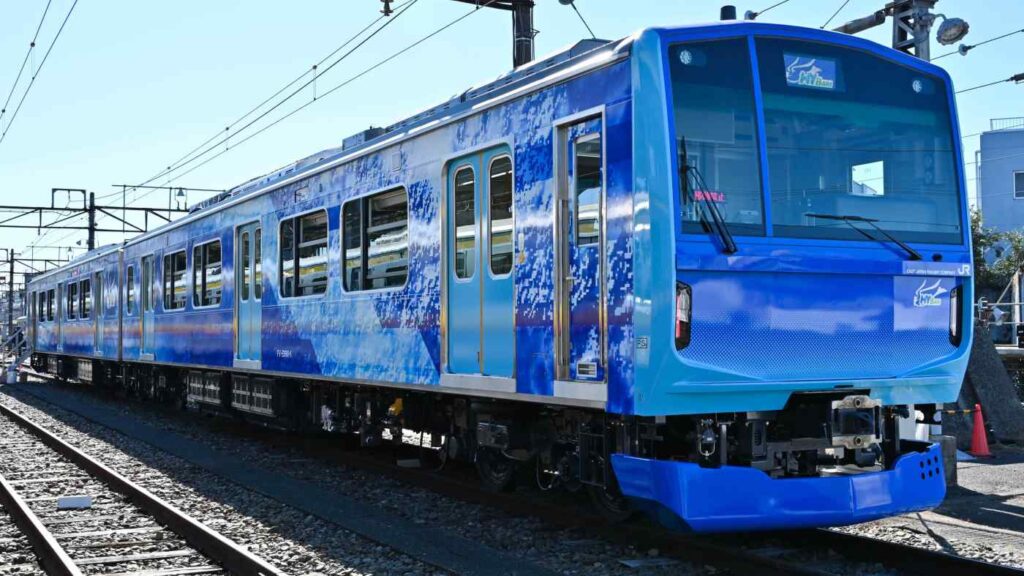Japan’s first hydrogen hybrid train is preparing for trials.
TOKYO February 19, 2022 – JR East debuted Japan’s first hydrogen-fuel hybrid train on Friday, touting a zero-emissions technology built in collaboration with Hitachi and Toyota Motor.
In late March, the business, previously known as East Japan Railway, will begin safety testing on the two-car Hybari train. Commercial service is expected to begin in 2030. Hybari is powered by a combination of hydrogen fuel cells and batteries. A fuel cell system receives hydrogen from tanks, and a chemical reaction with oxygen in the air produces electricity. When the brakes are engaged, energy is stored in the batteries.
“Trains powered only by batteries have short ranges, so we looked at using hydrogen, which is already commercialized for automobiles,” said Shoichi Oizumi of the JR East group’s Research and Development Center.
Hybari has a top speed of 100 kph and can travel up to 140 km on a single filling with high-pressure hydrogen. It was developed at a cost of around 4 billion yen ($34.8 million).

Railways, in comparison to vehicles and other means of transportation, are not a significant source of pollution, accounting for only around 4% of total transportation emissions in Japan. However, JR East, which has about 440 diesel cars, believes that “replacing them is vital,” as Oizumi put it.
There are no overhead lines or substations required for hydrogen-fuel trains. JR East intends to replace diesel trains, mostly in rural areas, after determining their energy efficiency through testing, with the possibility of exporting to overseas markets.
Even with fewer equipment, operating costs are a significant barrier to commercialization. According to Oizumi, costs will continue to exceed those of conventional trains.
By fiscal 2050, the JR East group aims to achieve net-zero carbon dioxide emissions. In fiscal year 2022, it will implement an internal carbon-pricing system, which will factor in the effects of CO2 reductions when making investment decisions.
The Coradia iLintTM is the first passenger train in the world to be powered by a hydrogen fuel cell, which generates electrical power for traction. With only steam and condensed water as exhaust, this zero-emission train makes very little noise. The iLintTM is unique in that it combines several new aspects, including clean energy conversion, flexible energy storage in batteries, and smart traction power and available energy management. It is intended specifically for use on non-electrified lines, allowing for clean, long-term train running while maintaining high levels of performance.
Alstom specialists in Salzgitter (Germany), our regional train centre of excellence, and Tarbes (France), our traction system centre of excellence, created the iLintTM. The German Ministry of Economy and Mobility has backed the initiative, and the Coradia iLintTM was developed as part of the German government’s National Innovation Program for Hydrogen and Fuel Cell Technology (NIP).
Source: https://asia.nikkei.com/

